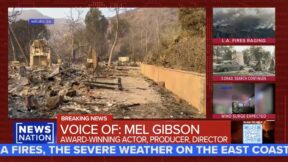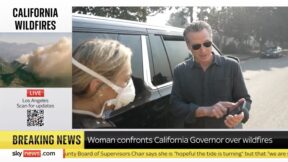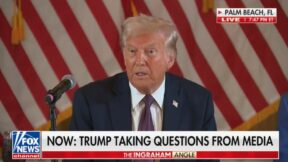Pollsters Who Missed in 2016, 2020 Say They Finally ‘Cracked’ How to Pin Down Trump Voters in 2024

AP Photo/Evan Vucci
A number of pollsters who expressed frustration at the industry’s inability to accurately poll elections with Donald Trump at the top of the ticket told Politico Saturday they more or less figured it out in 2024.
Polls in 2016 and 2020 appeared to show Trump in deep trouble against Democratic rivals Hillary Clinton and Joe Biden. Trump defeated Clinton in 2016 and lost to Biden in 2020.
Since 2016, much has been made of the so-called “shy” or “hidden” Trump voters – those who were apprehensive about admitting they intended to vote for the now president-elect.
Republican pollster Whit Ayres explained, “In the past, we have had a lot of Trump supporters who have simply refused to answer our questions … We call, ‘I’m from the New York Times or The LA Times or The Washington Post, and I’m doing a survey,’ and they go, ‘Well, to hell with you,’ click.”
Democratic pollster Paul Maslin told Politico, “The very same Trump voters who don’t trust experts, don’t trust the media, don’t trust science — also don’t trust pollsters. We found in several states that simply, they were opting out.” Politico’s Irie Sentner reported:
Opinion researchers swung and missed in 2016 and 2020, systematically underestimating Trump’s level of support. But in 2024, the polls corrected — and both popular vote and swing state results landed within the margin of error for aggregate predictions. Pollsters argue that they finally cracked the challenge of pinning down Trump voters, an elusive segment of the polling population that has caused polls to veer off the mark in previous election cycles when Trump was on the ticket.[…]In order to correct course, researchers this year “jumped through a lot of hoops,” Ayres said, in order to reach greater numbers of Trump voters and more accurately predict the outcome. They adjusted modeling of the likely electorate, weighted more heavily certain demographic groups, and adjusted their outreach strategy to non-college-educated voters, who tend to lean Republican.
That manifested in final polling aggregates showing five of the swing states in a dead heat, with Trump having comfortable leads in Arizona and Nevada. The polls also accurately forecasted Trump’s strength with white voters and Harris’ softness with Black and Latino men, which contributed to Trump’s decisive victory. The president-elect ended up sweeping all of the battlegrounds, an outcome pollsters attributed to undecided voters splitting unevenly — and perhaps surprisingly — toward Trump.
Trump won all seven battleground states after most polls showed him statistically tied with Vice President Kamala Harris down the final stretch. Joe Rogan’s late Trump endorsement was flagged as one potential factor that helped some undecided voters break late for him.
Republican pollster Brent Buchanan noted that people who are undecided late tend to vote Democratic but added, “This year, Trump benefited from undecideds.”
Sentner concluded:
Pollsters have largely blamed Trump as the variable driving inaccuracies in 2016 and 2020. “It’s a Trump issue, not a Republican issue,” said Ayres, who has four decades of GOP polling experience. Looking toward 2028 — the first presidential election without Trump in a dozen years — Eyres predicted “we can reasonably expect whatever problems we had getting Trump voters to go away.”






